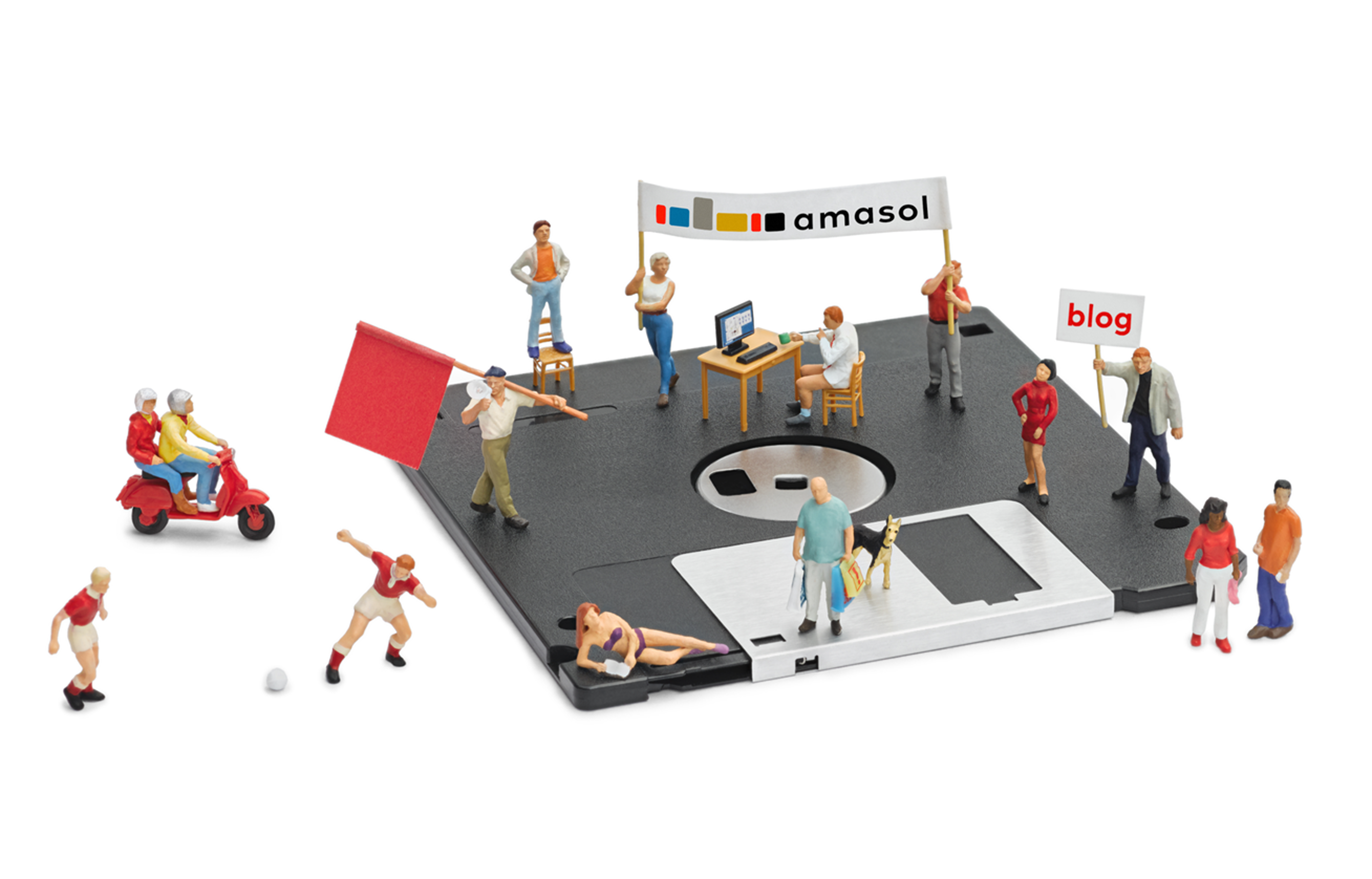
"The long-standing cooperation with amasol GmbH in Service Level Management has paid off!"
As an innovative IT partner for companies in the finance and insurance sector, Finanz Informatik Technologie Service (FI-TS) offers IT infrastructure and application services specifically for banks, insurance companies and financial service providers. FI-TS is a subsidiary of Finanz Informatik and a member of the Sparkassen-Finanzgruppe. With currently approx. 1,050 employees throughout Germany, the company achieved a total turnover of approx. 368 million euros (12/2016).
Project overview
Company
Finanz Informatik Technologie Service (FI-TS)
Field of application
Management and reporting of SLAs with banks, insurance companies and financial service providers
Challenge
Extensive SLA reporting requirements from outsourcing contract with new major customer
Implemented solution
Seamless expansion of the existing instance of Digital Fuel IT Business Management, mapping of 53 new SLAs, expansion and addition of calculation and commenting methods, cross-customer standardization and automation of reporting
FI-TS’s outsourcing services for banks, insurance companies and financial service providers range from the implementation, operation and maintenance of network infrastructure, mainframe, middleware and databases to technical workstations and mobile systems.
As part of application monitoring, the IT service provider develops system monitoring concepts, implements them and monitors the applications technically. FI-TS also monitors performance and switches the necessary resources at short notice in the event of performance peaks. In the area of incident management, FI-TS is responsible for analyzing errors and restoring application availability in the event of interruptions and failures. This is based on the service level agreements agreed between the customer and FI-TS, compliance with which is monitored by the customer as part of the outsourcing control prescribed for them. FI-TS provides proof of the provision of the agreed services, taking into account corresponding service levels such as the availability of applications (based on incident tickets or end-to-end measurements), timely job start (SOD based on incident tickets or Control/M-Host job data), timely job end (EOD based on incident tickets or Control/M-Host job data) or application performance (response times within specified time intervals).
FI-TS customers include the major state banks LBBW, BayernLB, Landesbank Hessen Thüringen (Helaba) and NORD/LB. FI-TS has been working with amasol GmbH from Munich almost a decade in service level management: a long-standing partnership that also proved its worth in the integration of the service level management of one of the major state banks described here.
2008: SLA Engine – from in-house development to standard SLM solution
The first contact between FI-TS and amasol dates back to 2008, when FI-TS made the decision to replace the self-developed SLA engine it had been using up to that point with a standard SLM solution.
“The main argument for the changeover was the continuously increasing complexity of the company’s own SLA engine with ever-increasing costs for the operation and further development of the system,” recalls Rudi Raab from Service Reporting at FI-TS. After a detailed evaluation of the solutions available on the market FI-TS opted for the SLM solution Guarantee from Oblicore. This marked the beginning of the collaboration with amasol, as the company was the German sales and support partner for Guarantee/Oblicore at the time.
2009: Oblicore becomes ServiceFlow
Just one year later, FI-TS was once again faced with the challenge of rethinking the use of its SLM solution, as the existing tool had already reached its limits. In consultation with amasol, FI-TS opted for the SLM solution Service Flow from Digital Fuel after a thorough review.
In a record-breaking time of just six months, the entire service level management of FI-TS was migrated from Guarantee/Oblicore to Digital Fuel ServiceFlow by the end of 2009.
2013: Another major Landesbank opts for outsourcing to FI-TS
In view of the ever-increasing demands on modern and efficient banking IT, another major Landesbank decided to enter into a strategic partnership with FI-TS in 2013. On September 1 of the same year , the entire data center, including application and infrastructure operations with a good 260 employees, was transferred to FI-TS. The aim of the outsourcing agreement was to obtain full-service operating services from a single source in future, to implement standardized IT solutions and to realize the associated savings potential.
2015: ZuSe project – tool consolidation in IT reporting
As part of the ZuSe project (consolidation of service reporting), a tool consolidation in IT reporting was then to take place from 2015. The aim was to integrate the reporting for the 53 SLAs of the Landesbank into the reporting of the more than 630 customer SLAs of FI-TS already in use at the time and to migrate them to the SLM solution used for this purpose. The official order for the project was placed in September 2015. The target date for project completion was agreed as December 31, 2016.
Project progression: Déjà vu with fictions
At the start of the project, Rudi Raab and his colleagues experienced déjà vu: CA Business Service Insight (CA BSI) had already been in use at the new Landesbank customer since 2004. This software is Gurantee/ Oblicore. CA had changed the product name after the takeover in 2010 – as is usual in such cases.
The experts from FI-TS and amasol were more concerned about the previous SLA reporting practice at the Landesbank. Rudi Raab explains: “SLA, capacity and ticket reporting was carried out in the SLA reporting booklets. However, the FI-TS standard was based on separate report components. For this reason, we were faced with the challenge of splitting reporting into ITBM, CRYSTAL and JANE reporting.” Digital Fuel’s IT Business Management Suite (ITBM) is used to create the complete SLA reporting, while CRYSTAL (together with Business Objects) is used as a flexible BI tool for individual report creation and JANE is a customer online portal for capacity management in the mainframe and increasingly also in the open systems environment.
Further challenges for the migration of the SLA data: Parallel migration projects were taking place in the network monitoring, ticket system and asset system areas, which reduced the personnel capacities available for the project to a minimum. Another “construction site”: the mainframe batch processing provided input in the form of more than 50 unstructured CSV files (flat files), which had to be converted into automatically processable data sets using parsers. In addition, a total of 53 SLAs were reported in 53 different booklets to 53 different recipients. Rudi Raab confirms: “Standardizing the different booklet formats was an important and central aspect of the migration project.”
However, significant adjustments had to be made not only to the reporting format, but also to the metrics. Rudi Raab explains: “With FI-TS, there are only two categories of metrics: SLA-relevant and non-SLA-relevant. At Landesbank, there were also SIP-relevant metrics. SIP stands for “Service Improvement Program” and means that if a SIP service level is not met, no penalty is due, but FI-TS must offer improvement measures in the customer service meeting so that the service level can be met again in the future.” More than 4,000 individual parameters had to be extracted from CA BSI for the manual contract creation in ITBM. Another challenge during the data transfer was transfer of historical values from CA BSI to create the newly introduced 13-month history.
The biggest challenge, however, was overcome the fictions previously contained in the Landesbank’s SLA reporting. An example from an SLA: “Periods in which no measurement takes place or no measurement data is available are excluded from the above fiction, provided that the contractor proves the actual achievement of the service level in another way.” Rudi Raab: “The fictions in the previous reporting did cause some frowns at one point or another and were definitely the biggest challenge in the ZuSe project, as ignoring missing measurement intervals contradicted the SLA processing of all other customer SLAs.”
Conclusion: Long-term partnership pays off
Following the final approval of the project in December 2015 and the start of the preliminary project for the detailed analysis, amasol was able to present an initial version of the specifications in February of the following year. Development itself then began in June 2016, with five contracts specified by the customer being created in the test environment as early as September. The go-live for the new developments then took place in October, and all SLAs were created in the productive system from November. The first and complete delivery of the SLA reporting in the form of the January 2017 reports finally took place in February 2017.
Rudi Raab explains the lessons learned during the project: “First of all, it is important to involve the customer directly in the project at an early stage. This is particularly important if you want to motivate and inspire them to adopt a new design and format for their previous reporting layouts .” Today, all 53 SLA reports and the reports of all other customers are created and delivered with a standardized booklet layout. Instead of two charts with SLA values for the current calendar year and the previous year, the customer now receives a rolling, tabular 13-month history from Digital Fuel ITBM. The notation of the metrics was also standardized in the course of creating the new SLAs and additional detailed information is now provided for each metric in the SLA report.
Rudi Raab adds: “With such an extensive migration project, it is always important to keep an eye on the benefits and added value for all customers. This applies, for example, to new elements in the SLA report such as a content directory or the aforementioned 13-month history. As incidents, changes and service requests with unique reference numbers from our ARS workflow system are very often referred to when commenting on (evaluating incidents by the specialist departments) failures or service interruptions, we have now implemented a dynamic printout of these referenced incidents per metric with relevant basic information for all customers. Of course, these improvements not only benefit our new customer, but also all existing FI-TS customers.”
“In addition,” says Raab, “we must not forget the internal perspective in projects of this kind. The newly designed and configured dashboards with drill-down function in ITBM not only provide information about the new customer, but also offer FI-TS employees valuable information and insights about all customers.”
Last but not least, Rudi Raab is certain: “Without amasol, we would not have been able to complete this project in terms of time and quality.” The many years of cooperation paid off in full. Another major advantage was that amasol had extensive CA-BSI knowledge due to its Oblicore partner past, which made it possible to seamlessly integrate the CA-BSI metrics into the existing ITBM environment at FI-TS. Rapid implementation and uncomplicated support in the event of internal resource bottlenecks also speak for the successful cooperation between FI-TS and amasol.

Customer success stories
Explore how companies have transformed their IT systems and processes with amasol’s expertise.

Why amasol
We aim to increase agility, increase the value proposition and improve the efficiency of IT and thus increase business success.

Resource center
Search through our library of resources for inspiration on how amasol has helped other customers to power their experience business.

Our tools
Explore the tools and partnerships that help us drive success and optimize your IT environment.




